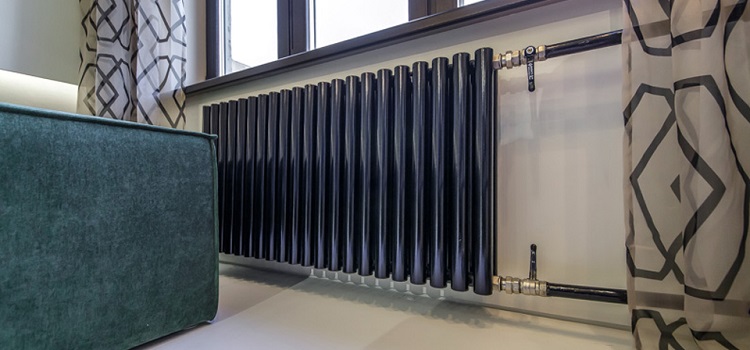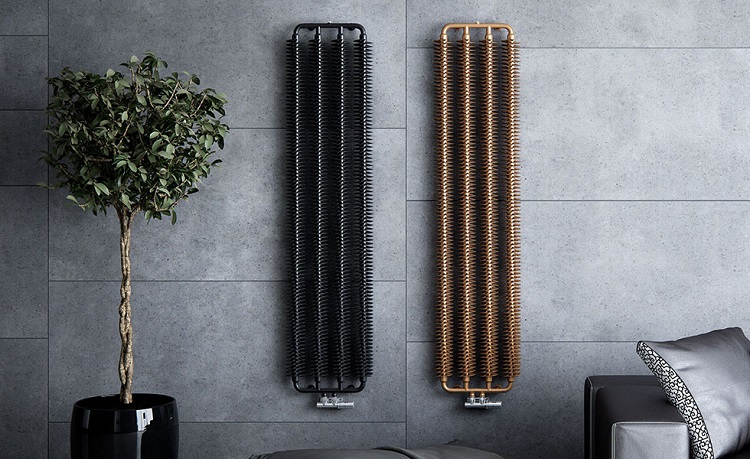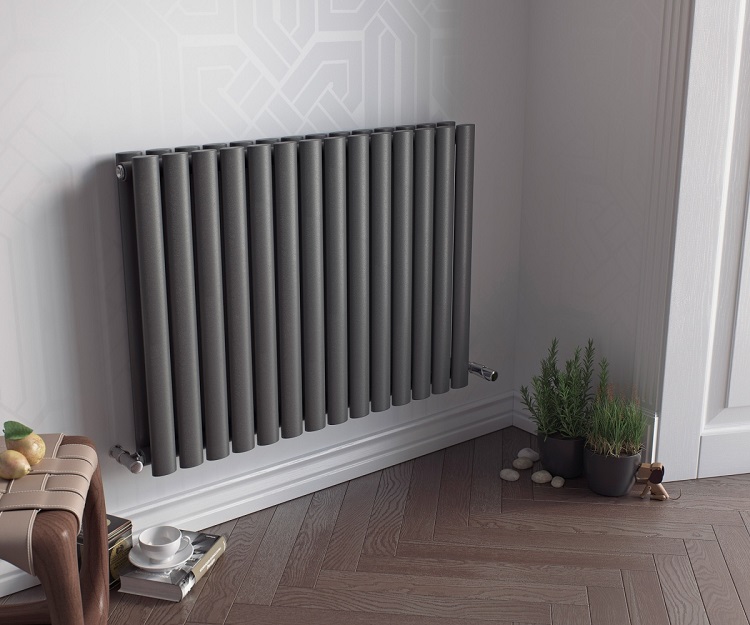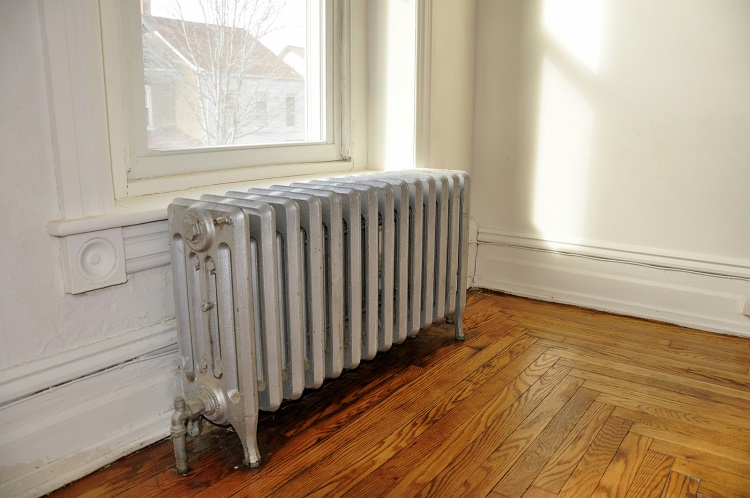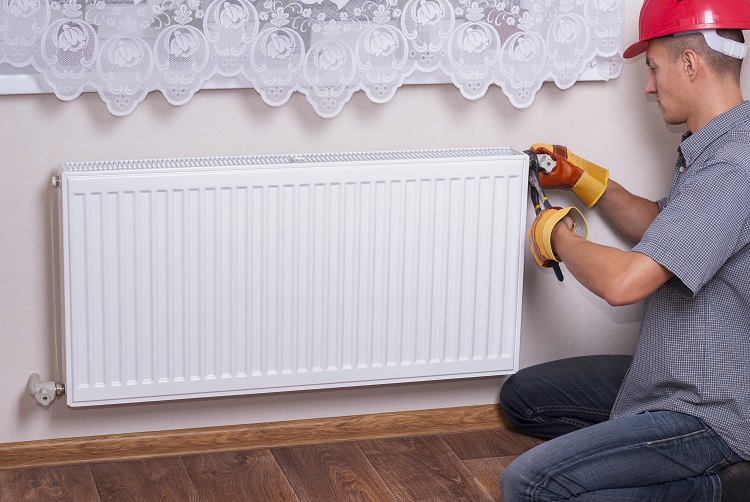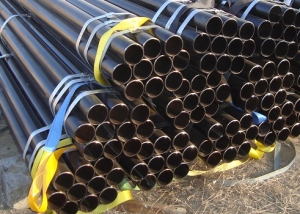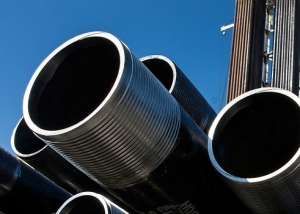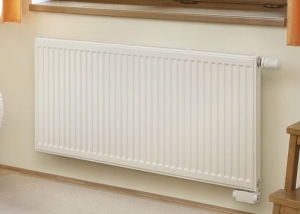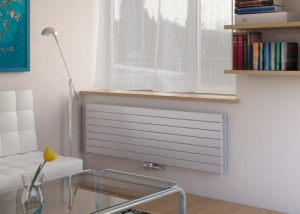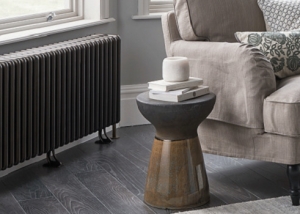With a huge selection of heating equipment, it is difficult to understand the heat transfer indicators of heating radiators - the table shows their efficiency. Each model must have a certificate and technical passport, which indicates the main parameters. But they do not provide an opportunity for a visual comparison of thermal conductivity, power, and other most important characteristics of products from different metals.
Content
- 1 The main characteristics of modern heating radiators
- 2 Causes of errors in the calculation of thermal conductivity
- 3 Thermal return of heating devices on the example of bimetallic batteries
- 4 Ways to increase the heat transfer of the heating system
- 5 Determining factors for heat transfer performance of the radiator
- 6 Installation recommendations for enhanced heat dissipation
The main characteristics of modern heating radiators
The thermal equipment market is replete with modern models that differ in format and heat dissipation, which are produced from different metals:
- aluminum;
- copper (pipe for the coolant) and aluminum (outer casing);
- steel and aluminum;
- steel;
- cast iron.
Cast iron batteries are considered a “classic” of heating appliances. Heavy bulky "harmonica" are known to everyone since the Soviet era. They are gradually being superseded by new models in retro style from the same cast iron. Customers increasingly prefer more modern bimetal radiators.
Although cast iron warms up for a long time, such batteries are popular and enviable consumer demand. The new models of cast iron radiator type MS 140 are reliable, cheap, resistant to pressure drops in the system, provided that they are securely connected to the pipes during installation. When turned off, cast-iron “accordions” keep heat for a long time, although they warm longer than other varieties. New developments have an improved design, often there are legs for floor mounting. Comparison of thermal inertness (heating rate) and general indicators are presented in table 1.
Table 1.
| Parameters / Metal | Cast iron | Steel panel | Steel tubular | Bimetal | Aluminum |
| Format | Sections | Whole | Whole | Sections | Sections |
| Thermal inertness | High | Low | Low | Low | Low |
| Corrosion Resistance | High | Average | Average | Average | Average |
Aluminum products with a steel tube under the coolant - record holders in efficiency. Today, 1 section of a bimetallic radiator warms up much faster and gives more heat to the atmosphere of the room than products made from other materials. At the maximum temperature of the filler, a characteristic crack is heard, since aluminum and steel have different thermal conductivities and expansion ratios when heated.
There are also batteries based on a copper tube in an aluminum casing - these are the most expensive bimetallic blocks. They have the best characteristics, high thermal efficiency and the longest life. Disadvantages - the high cost and complexity of installation (it is better to entrust it to professionals).
Helpful advice! Assessing the effectiveness of different models of the same metal, take into account the wall thickness of the section or tube. These parameters should be indicated in the description of the model.
Aluminum heating radiators are lighter and cheaper, although they are slightly inferior to bimetal in basic parameters, including a section power of 1 square meter. Tubular models have a pleasant design, they are easy to repaint to the color of the room. The main disadvantage is the likelihood of deformation and leakage in the articulation dreams with water hammer and ultimate pressure. For this reason, experts recommend purchasing them for heating the private sector.
The steel casing perfectly resists temperature changes, is less polluted, having a smooth galvanized inner surface. Relatively low price, high heating rates and good efficiency are the defining indicators that explain their popularity. However, over time, the inner protective layer is destroyed under the influence of abrasive particles of the coolant.
Causes of errors in the calculation of thermal conductivity
The heat dissipation of the heating battery is an important criterion for the power or energy of the heat received in a certain amount of time. This indicator is measured in W / m * K or cal / hour (there are discrepancies in the technical description for the models). For the translation of quantities use the ratio
1.0 W / m * K = 859.8452279 cal / h.
Bimetal (with copper) and aluminum are leaders in terms of thermal efficiency. However, when comparing, differences often arise, even when all the calculations are correctly performed.
The heat dissipation of heating radiators, taking into account the type of metal, is presented in table 2.
table 2
| Metal | Thermal Conductivity W / (m * K) |
| Aluminum | 237 |
| Bimetal | 185-212 |
| Steel (different brands) | 58-65 |
| Cast iron | 52-60 |
The most difficult thing is not to make a mistake in the heat transfer indices of the aluminum radiator and bimetal models. These errors are easily explained by other indicators:
- Heat transfer depends on the structural classification of the model (panel, tubular and sectional), which also differ in the interaxal distance and the degree of passability of 1 cubic meter of coolant for the same time.
- Batteries are not manufactured from ordinary aluminum, but from silumin (an alloy with the addition of silicon).
- The degree of contact of two materials in bimetallic structures.
- Bimetallic models come in two types - copper + aluminum or steel galvanization + silumin.
Note! Full heat dissipation is calculated on the complete warming up of the battery.
Some models have a certain inertia during heating, which is observed at the beginning of the heating season. Therefore, it is impossible to compare the heat transfer of cast-iron and bimetallic radiators, checking the heating with the touch of a hand, until they truly “accelerate”.
The first few hours it takes to warm up the entire system and each radiator separately. This time is different for each model, a lot depends on the clogging of the heating circuit. From Soviet cast-iron "accordions" one should not expect high thermal return. They are catastrophically clogged with rust from pipes, calcium and organic sediment.
Thermal return of heating devices on the example of bimetallic batteries
Tabular data may vary significantly within the same product niche. These indicators depend on several determining factors, including battery models, wall thickness and metal grade.
Comparative indicators of thermal return for models from different manufacturers are summarized in table 3.
Table 3
| Modification / Parameters | Grandi 500 | Tenrad 350 | Tenrad 500 | Altermo RIO | AltermoLRB | Style 350 | Style 500 |
| Format (height, width, depth in mm) | 580x80x80 | 425x80x80 | 550x80x77 | 570x82x80 | 575x85x80 | 425x80x80 | 575x80x80 |
| Thermal Conductivity W | 167 | 120 | 160 | 166 | 169 | 125 | 268 |
| Working pressure bar | 16 | 24 | 24 | 18 | 18 | 35 | 35 |
Important! To comply with the heat transfer parameters of one section of batteries indicated in the table, it is important to insulate the housing. In this case, it is easier to keep the microclimate at room temperature even in severe frosts.
Ways to increase the heat transfer of the heating system
It is important to understand that this information is averaged data. In fact, the heat dissipation of heating radiators, the table and the declared technical specifications may vary slightly in real conditions. Total heat loss reduces the efficiency of the heating circuit of an apartment or house.
Effective measures:
- external insulation of the house;
- replacing old dry windows with double-glazed windows of a new type, transfer them to the winter mode during the heating season;
- if the apartment is on the first or last floor, it is important to insulate as much as possible from the side of cold adjacent rooms;
- fasten heat-reflecting foil panels to the batteries on the wall for winter time;
- occasionally purge the system and clean the radiators to remove sediment that reduces the efficiency of the equipment (the sign is warm pipes and barely warm batteries);
- when decorating walls (especially in a corner bedroom or a nursery), it is recommended to install a set of steel batteries - on 2-3 walls, regardless of the number of windows, design heating panels or convection blocks mounted in floors are additionally installed.
After a quality wall insulation, it is advisable to replace the old cold finish with a new one. Better natural wood and cork sheets, textured plaster without cement and gypsum "wild stone". Also suitable textile wallpaper with a velvety surface and non-woven paint.
Determining factors for heat transfer performance of the radiator
In the technical description for any model of equipment, important parameters are indicated. In practice, the efficiency can vary slightly due to a lot of factors:
- Design features - ribbed surfaces give more heat than flat panels, and decorative panels take up to 40% of energy.
- Location in the window sill and height from floor level - cold air envelops the battery, and the greater the access, the better the air circulation in the room.
- Convection models contribute to a more active circulation of heating the air volume in the room.
- The range of radiators is huge, but not for every unit there is a suitable place in height, width and depth.
- A type of coolant (water, antifreeze), temperature and distance from the boiler to the end point (a large percentage is lost along the way, transferring heat through the pipes).
- Thermal inertness of the metal (cast iron batteries warm up for a long time at startup).
- Type of connection (filling diagonally with water is more efficient than lateral and lower mounting type).
- Variety of the device according to the type of installation (wall, mounted and floor radiators).
- The presence of painting (metal surfaces are warmer than painted options).
Helpful advice! Acquiring a powerful model for a small room has certain difficulties - you have to lower the temperature. To do this, special thermostatic valves are installed at the entrance to the batteries, often they are offered as a set.
Installation recommendations for enhanced heat dissipation
Heating equipment is designed to ensure that during its installation all the norms that make heat transfer the most optimal will be observed.
The horizontal of the radiator must be strictly maintained, otherwise at the top point airflow will be observed. A small amount of air is dissolved in a small amount in the coolant, plus the release of gaseous substances. From these small bubbles, air pockets accumulate over time, reducing battery efficiency. For the prevention of airing when installing batteries, it is imperative to use a universal building level.
One of the determining factors for the efficient operation of radiators remains the installation standard. To the windowsill - within 10-15 cm ± 3 cm (depending on the size of the window sill).From the floor - about 10-12 cm (± 3 cm) and to the wall - at least 5 cm (more can be).
Important! The error during installation (in the direction of decreasing the distance to the battery) reduces the thermal coefficient of the device by 8-10%. This is due to the partial passage of air masses through the structural elements of the thermal block.
Obviously, all the data in the tables can be taken as indicative, since the power of heating radiators, steel, cast iron and bimetal, is affected by a lot of nuances. It is proposed to compare the performance of different models using table 4.
Table 4
| Variety | Thermal return |
| M-140-AO (cast iron) | 175 |
| M-90 | 130 |
| RD-90 | 137 |
| RIfar Alum (Aluminum) | 183 |
| RoyalTermo Optimal | 195 |
| RIFAR Alp (bimetal) | 171 |
| RIFAR Base | 204 |
Design differences and the type of metal are the main factors that determine the thermal power of radiators. The main characteristics should be indicated in the technical description of the model, however, it is not always possible to believe what was written by the manufacturers in the documents. Chinese fakes, which flooded the world market, are often accompanied by "real" certificates, promise high heat transfer, not confirmed by anything in practice.
In the technical passport from some manufacturers, the parameters of 1 section are indicated, while others indicate a general indicator of the model of this format. Therefore, it is important to carefully read the information and delve into important indicators so as not to make mistakes.
